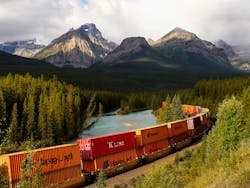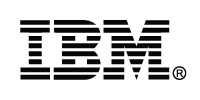Is Your Rail Supply Chain One Storm Away from Collapse?
Railway infrastructure maintenance is critical to ensuring the nation’s supply chains run smoothly. While most rail companies understand this, fewer may realize that the changing climate amplifies care and repair concerns. Climate change adaptation must become part of supply chain planning, especially for rail transport.
Many railways throughout the country are already aging. As environmental threats grow, businesses and government authorities can no longer ignore the need for better maintenance and resilience planning.
How Climate Change Threatens Rail Infrastructure
Climate change is an indisputable reality. Scientists have discovered that as greenhouse gas emissions have risen, extreme weather has become more frequent and severe. This trend will likely continue even if the world takes steps to avoid the worst long-term effects, making near-term adaptation essential.
Virtually all inclement weather events may worsen amid rising climate change, and many directly impact supply chains. Flooding, wildfires, extreme temperatures, heavy precipitation and tropical storms have all become more common and damaging over recent decades. Failure to account for similar changes in the future can put railways at particular risk.
Freeze-thaw cycles, high heat and heavy rain can degrade and deform railways, and all of these conditions will grow amid a shifting climate. Consequently, infrastructure will age and wear down faster than it has in the past. Without climate change adaptation, warping and similar damage may become more common and appear unexpectedly, potentially disrupting rail shipments.
A worst-case scenario may lead to derailments and crashes as trains struggle with worn tracks. However, even a less extreme future can be disruptive. Excessive vibrations from moving over poorly maintained tracks could damage cargo or impact railcar maintenance, demanding more frequent repairs.
While railroad accidents have decreased over time, climate change could threaten that positive trend. Track defects are the second most common cause of derailments and may be a more prominent risk if railway infrastructure maintenance does not adapt to changing weather patterns.
The Value of Technology in Rail Resilience
One of the most crucial steps in climate change adaptation for rail companies is to embrace technology. Innovations like the Internet of Things (IoT) and artificial intelligence (AI) offer several key advantages for maintaining infrastructure amid extreme weather.
Some tech-driven improvements are relatively straightforward, such as AI forecasting. Researchers have developed machine learning models that outperform conventional weather models in both prediction accuracy and lead times at a fraction of the computational cost. Using such tools allows logistics organizations to see extreme weather coming with more time to reschedule shipments or repairs as necessary.
AI models may also prove valuable in analyzing nationwide infrastructure to highlight which sections demand the most attention. Resolving all maintenance concerns simultaneously is not economically or logistically feasible, so stakeholders must determine which repairs to prioritize. Machine learning can consider complex interrelated factors to suggest which fixes will produce the largest impact given current weather trends.
IoT solutions can further improve railway infrastructure maintenance by providing real-time performance data. Connected sensors on trains and throughout a railroad can alert businesses as soon as concerning trends arise that may suggest defects or signs of wear. Teams can then resolve the issue to prevent accidents before extreme weather worsens them. Such functionality is also vital when responding to a storm, the effects of which may not be immediately evident.
Workflow Adaptations for Better Maintenance
Climate change adaptation must also include workflow-related changes. On a management level, rail companies should recognize that the most important weather events to prepare for vary between locations. Wildfires damaged over 24,000 structures in 2018 alone, but California saw far more of these events than other states. Elsewhere, precipitation defenses and responses may demand more attention.
Monitoring and proactive maintenance must also become organizational priorities. Logistics businesses cannot afford to run trains or the infrastructure they rely on to failure. Regular preventive repairs should become the norm, unless companies use IoT systems to drive predictive needs-based care.
Employees will likely need training to adapt to new tech-centric maintenance practices. As many as 60% of companies today cite tech talent shortages as a key barrier to digital transformation. The outside tech expert market is competitive, so the better solution is to upskill the current workforce to use new technologies. Training operators to access and understand IoT devices and teaching repair technicians to use predictive systems are among the most crucial changes.
On a larger scale, supply chain leaders should consider how they can restructure their networks to avoid the largest rail risks. Finding suppliers outside of areas heavily affected by climate change—such as those near coasts or in arid regions—can offset some weather-related concerns.
Remaining Challenges in Climate Change Adaptation
Adapting railway infrastructure maintenance to new climate concerns is essential, but it is not easy. Leadership must also consider the challenges many organizations face in these efforts to guide more effective strategies.
Only 30% of large-scale tech projects fully meet all expectations, and the difference between success and failure is often a matter of project management. While nine out of 10 high performers say clarity of scope and business objective make the biggest difference, most digital laggards cite poor planning as their biggest roadblock.
This discrepancy highlights the need for thorough planning before using new technologies to improve railway maintenance. Effective management starts with identifying which innovation is most relevant to the specific supply chain in question. Some rail systems will benefit more from predictive maintenance, while others may find AI weather forecasting more relevant. Extensive research and investment planning can help companies navigate these considerations.
As railways implement more IoT and AI solutions, they must also pay greater attention to cybersecurity. Attacks against critical infrastructure rose by 30% between 2022 and 2023 and may continue to rise as attack surfaces grow. Failure to protect digital platforms may make climate resilience investments more hazardous than advantageous. Any technical defenses must come alongside cybersecurity training for all employees.
Railway Infrastructure Maintenance Must Adapt to Climate Change
Rail-dependent supply chains cannot avoid the effects of climate change. Consequently, their maintenance and planning strategies must shift in response. The only way to remain productive and safe amid shifting weather patterns is to prepare before disaster strikes.
New technology and workflow adaptations can prepare railways for climate-related threats, but only if organizations act soon and plan ahead. Action today is necessary to prevent a worst-case scenario tomorrow.
About the Author

Emily Newton
Emily Newton has eight years of creating logistics and supply chain articles under her belt. She loves helping people stay informed about industry trends. Her work in Supply Chain Connect, Global Trade Magazine and Parcel, showcases her ability to identify newsworthy stories. When Emily isn't writing, she enjoys building lego sets with her husband.






